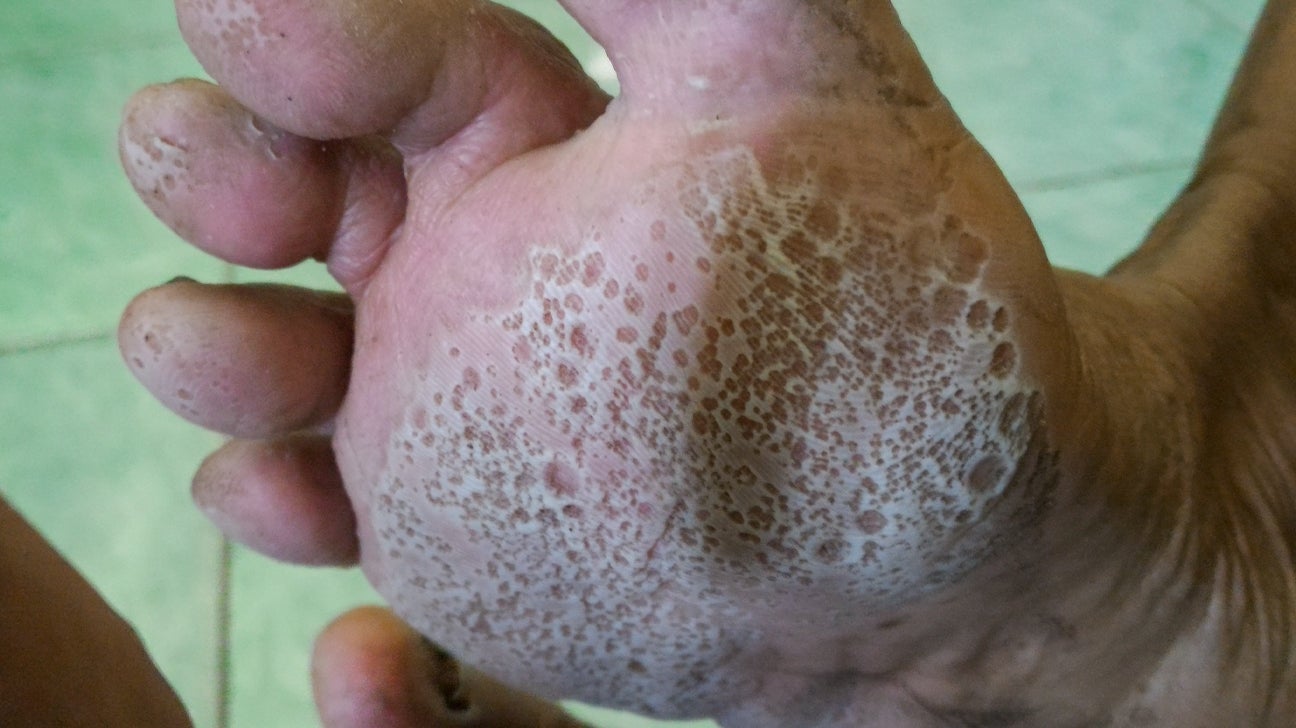What is pitted keratolysis ?
PITTED KERTOLYSIS:
Excessive sweating of the feet and use of occlusive footwear provide an environment in which these bacteria thrive and therefore increase the risk of developing pitted keratolysis.
The condition is fairly common, especially in the military where wet shoes/boots are worn for extended periods of time without removing/cleaning. Skin biopsy specimens are not usually utilized, as the diagnosis of pitted keratolysis is often made by visual examination and recognition of the characteristic odor. The infection is characterized by craterlike pits on the sole of the feet and toes, particularly weight bearing areas.
WHAT ARE THE SIGNS AND SYMPTOMS OF PITTED KERATOLYSIS ?
Pitted keratolysis typically presents with white discoloration of the skin and numerous discrete, "punched-out" pitted lesions or erosions, usually located on the soles of the feet.The pits are typically 1–7 millimeters in diameter. These circular and shallow pits are characteristic of pitted keratolysis, and often overlap to produce larger areas of erosion. The appearance of this condition’s characteristic lesions becomes more pronounced when the affected area is wet or submerged in water. Occasionally these lesions present with a green or brown hue around and within the pits.
These superficial erosions are found under the toes and on the soles of the feet, and especially at the pressure bearing points such as the heel. Typically, both feet are equally affected. Rarely, the condition affects the palms.
HOW IS A PITTED KERATOLYSIS DIAGNOSIS ?
The diagnosis of pitted keratolysis is based primarily on the physical examination, with recognition of the classic pitted lesions and pungent odor. Dermoscopic examination can facilitate visualization of pits and pit walls. A Wood's lamp may show coral red fluorescence, as seen in erythrasma. However, this finding is not uniformly present, as the condition may be caused by bacteria that do not produce fluorescent pigments. Further laboratory testing is not typically required for the diagnosis. However, a potassium hydroxide preparation can help rule out the presence of a fungal infection. Imaging and biopsy are not necessary.
Differential diagnosis
- Acid
- Athlete's foot (Tinea pedis)
- Erythrasma
- Hyperhidrosis
Foot hygiene is important. The feet may be washed at least daily with soap and water, and dried thoroughly afterwards. Moisture-wicking socks and shoes may be worn and antiperspirants, such as aluminum chlorohydrate, may help to keep the feet dry. Injections of botulinum toxin have successfully induced cessation of sweating (anhidrosis) of the soles of the feet and led to resolution of pitted keratolysis. These injections are typically reserved for refractory cases of pitted keratolysis that have failed to respond to environmental modifications and antibiotics due to the high cost and pain associated with botulinum toxin injections.
Pitted keratolysis can be reduced and eventually stopped by regularly applying a liberal amount of antiperspirant body powder to the inside of the shoes and socks of the affected person. Regular powder application will greatly reduce foot perspiration and keep the plantar surface of the foot dry therefore creating an environment hostile to the Corynebacterium.



Comments
Post a Comment